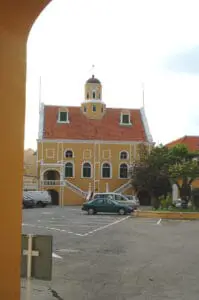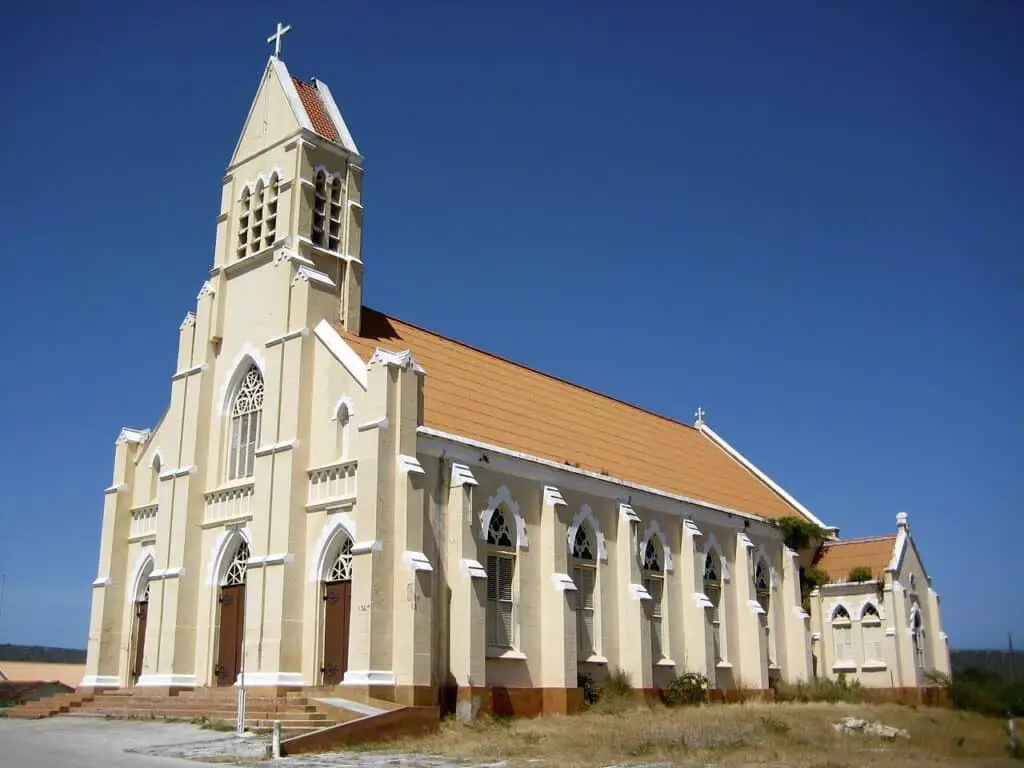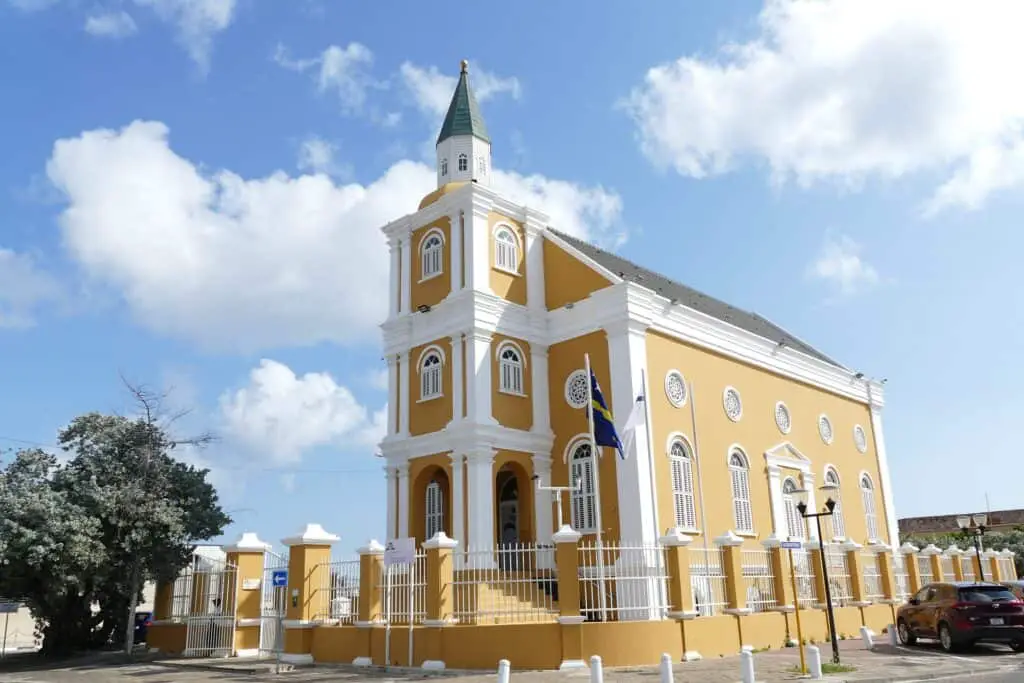A popular theory has it that the Spanish named Curaçao as “Corazon” for the island’s heart shape. Later it became or heart from the Portuguese word Coração or ‘heart.’ Originally the land or the Awarak peoples Curaçao has a vibrant history and culture stretching back into antiquity.
The best churches in Curacao
The best churches to visit in Curaçao are the Fortkerk, Sint Willibrordus, the basilica of St. Anne, and the Pietermaai Cathedral. Each church has its own unique features to make your visit worthwhile and offer spectacular historic architecture.
Once a Spanish, Portuguese, and Dutch port, this Lesser Antilles Island in the south of the Caribbean Sea has a wealth of historical monuments. Some of their finest monuments and testaments to history are the churches in Curaçao. We have chosen some of the best churches for you to include in your Curaçao itinerary.
De Fortkerk (The Fortchurch) in Fort Amsterdam
The oldest Protestant church in daily use in Curaçao is the iconic Fortkerk in Willemstad. The thick-walled church dates all the way back to 1769 and also features a museum underneath it. As part of a fort, the church had to be strong to stand up against attacks and boasts a cannonball embedded in its outside wall to prove its sturdiness. Rumor has it that the cannonball, left in 1804 in a British invasion, was fired from Captain Bligh’s notorious ship the “Bounty.”

After extensive restoration, the Fortkerk is now painted a golden yellow with white accents. Still part of the original fort itself, the church is a remarkable blend of spirituality and warfare readiness in those turbulent times. The Fortkerk is an idiosyncratic blend of form and function.
Old maps show a small church in the Fort Amsterdam from as early as 1707. Being on the site of lengthy sieges, the rainwater cisterns for survival are still found in the museum under the church, which was once the church vestry. The museum’s back door leads to the ‘Parapet the cat,” where a cannon was previously held to defend against attack.
Although the church is not large, it is rather tall, with the tower’s highest point reaching 16 meters above the ground. The height had the added advantage of being used to dry and store ship sails back in the day, that was hoisted by a pulley system. The original octagonal tower had to be replaced in 1903 due to the effects of time and was replaced by a round tower instead.
The Fortkerk also has an incredible pulpit in what looks like a chalice’s shape, demonstrating the carpenters’ remarkable craftsmanship from that era. These masterpieces dated from 1769 and were crafted by the deacon and carpenter Pieter de Mey, the grandson of the man named Piertmaai.
The fascinating original clockwork in the tower can be found today on display in the museum and dates back to 1788. The clock and its original mechanical workings are one of only two such clocks in the entire world.

Sint Willibrordus Roman Catholic Church
A Roman Catholic mission in the Sint Wilibrordus parish built this beautiful church that bears the town’s name. The towering neo-gothic church, now painted a yellow-gold color and accented in white, was built between 1884-1888 by the parish priest V. Janzen and his followers, with the help of Architect E.K Margrij. The church was built on a previous church site in 1849, which was little more than a shelter.
The imposing church is breathtaking in the afternoon light and still offers services and an impressive church choir. There is a well-kept cemetery dating back over a century above ground to visit. The Church was renovated by the Curacao monument’s foundation in 1999.
Basilica of St. Anne
St. Anne’s basilica is renovated in a pale blue/green with white detail and has an unusual step-like dome. Inside, the church is airy with old columns between the pews and a high vaulted ceiling. The church is still active and conducts Catholic masses to this day, and you will be amazed at the work that has been done to preserve this critical part of the Island’s history.
The minor Catholic basilica was built between 1751 and 1768 under Brother Miguel Grimon from Peurto Rico. It was completed in 1768 by brother Maubach.and was awarded its status as a co-cathedral of the Diocese in 1975 by a decision by Pope Paul VI. This historic building boasts the fact that it is one of the smallest church basilicas in the world.
The Queen of the Most Holy Rosary Cathedral (Pietermaai Cathedral)
The cathedral of the Holy Rosary is a Catholic church and is the cathedral of the Diocese of Willemstad. This beautiful church with high tiers is painted golden ocher and white and towers above its surroundings. The bright white interior is home to many statues, including a Pieta dedicated to the Virgin Mary similar to those in Italy.
Builtin 1870, the neo-gothic touches of its architecture mirror the church buildings’ styles of yesteryear. The church is part of the World Heritage designated by UNESCO.

Temple Emanuel
Although most of the people in Curacao are Christian, there is also a large Jewish community. The first Jewish families arrived in Curacao in the 17th century, originally from Portugal.
You can find this beautiful synagogue in Punda. It looks like a church, most tourists think it is a church, but it is not. It is called the Emanuel Temple. The full name is the Mikvé Israel-Emanuel Synagogue. Mikvé stands for hope. It is not a church, but I felt like I had to mention this beautiful building to give you some background about it.
Conclusion
With such a diverse history and culture, Curaçao is home to some breathtaking sights and structures of significant historical value. The churches are a great feature of European architectural styles and are worthy of a visit in your travels. The archaeological finds of the indigenous cultures make the European arrivals insignificant in their duration with artifacts and remains from as far back as 2,500 B.C.
